We made a further long bus journey (which of course became an even longer long bus journey because that is what happens in Colombia) to reach the Atlantic coast port of Cartagena de Indias. This is an historic city in South America (founded 1533) and was for many years the principal Spanish port for the exportation of gold and the importation of slaves from Africa. Of course, all the treasure stored there waiting for a boat to Europe, made it a tempting target for pirates. In the 16th century alone it was beseiged five times, most famously by the English pirate Francis Drake in 1586.
All this activity led the Spanish to construct very substantial and elaborate walls around the city with frequent even stronger forts. Over the years the town has expanded substantially and is still Colombia's biggest port. However, the historic centre retains many of the colonial buildings. From our point of view it was the first time for months that we have looked out at an ocean and seen the Atlantic rather than the Pacific.
The largest fort still remaining was close to our hostel and we went for an explore. The ramps and walkways were fascinating and we were frequently at a bit of a loss as to which direction to take as we strolled around looking out onto the town. However, this paled to insignificence when we ventured into the tunnels that fill the fort.
Pathways went off in all directions, punctuated by alcoves and further tunnel entrances. The corridors descended steeply into the very bowels of the fortress, some leading off into darkness (and of course we did not have a torch with us). It was bewildering and it would have been very easy to get completely lost but luckily Jen employed her now legendary sense of direction and we eventually found our way back to the surface.
At the very top of the fort we found ourselves right next to a massive twelve metres long national flag. Tony bravely took hold of one corner and was almost swept away on the wind (not really but the wind in the flag was very strong).
The historic centre is very attractive with cobbled streets, many plazas and a good sprinkling of ancient churches. Many of the other buildings have wooden balconies looking onto the streets that are covered with climbing plants such such as bougainvillea. The old walls still stand around much of the town and create an interesting walk around the place looking down into the town streets and squares. We enjoyed our stroll around town although we are now back in touristland so we were constantly hassled by people to go into their cafe, restaurant, jewelry shop etc. A new twist here is people walking along beside you inviting you into each shop you pass although they are nothing to do with any of the shops, presumably hoping for a cut of any purchase you might make.
An interesting feature of many of the buildings here (including the walls) is the use of what looks like building blocks cut from dead coral. we weren't able to find out if these were reefs that had been left high and dry after sea level changes or a systematic removal of old rock from below the surface. We're sure that if any of our readers know, they will tell us!
One of Cartegena's tourist attractions is the House of the Inquisition, which is now a museum claiming to have information about the Inquisition and examples of the implements of torture employed.
The museum disappoints. It is true that it is a fine colonial house where the Inquisition was based for over two hundred years. It does have some information about the Inquisition and its purpose but much of it turns out to be a bit of a damp squib. The Inquisition generally concerned itself with identifying witches but in Cartegena the main proccupations were bigamy and prostitution. There was very little violence or torture and the inquisitors themselves are described as honest, just and with strong faith. Records indicate that there were no more than five executions during its whole existence, which is pretty measly stuff considering its infamy!
The museum's collection of torture apparatus turns out to be a handful of modern replicas of instruments that might have been used. However, each has a small comment that 'these implements were never used in Cartegena'. Of course, nobody expects the Spanish Inquisition and in this case there was certainly little evidence of it. What we also didn't expect to find in one of the courtyards was yet another statue from San Augustin. At this rate there will be no need for us to go there, there will be no statues left in situ!
We were a bit surprised to come across an interesting section of sidewalk just outside one of the main squares commemorating all the Miss Colombias from 1934 onwards. It seems that Colombians are still very excited by beauty contests and each region devotes considerable funds to choosing and supporting their candidates to go forward to any number of different competitions. Putting aside any feminist issues and overlooking past involvement of drug barons, there also seems to be quite a bit of hipocracy.
In 2005 Miss Bogotá was ousted from the contest because she had posed in underwear for a health magazine. When similar claims were made about another candidate, the judges looked closely at the clothing and decided that it was swimwear so all was OK.
Nobody expects the Spanish Inquisition...
Wednesday, May 05, 2010
 Cartagena, Bolívar, Colombia
Cartagena, Bolívar, Colombia
Other Entries
-
97More lines and symbols but this time they're BIG!
Mar 3135 days prior Nazca, Peruphoto_camera41videocam 0comment 2
Nazca, Peruphoto_camera41videocam 0comment 2 -
98Sun worshipping through the years
Apr 0431 days prior Trujillo, Peruphoto_camera62videocam 0comment 2
Trujillo, Peruphoto_camera62videocam 0comment 2 -
99We go in search of GOLD!
Apr 0728 days prior Chiclayo, Peruphoto_camera58videocam 0comment 4
Chiclayo, Peruphoto_camera58videocam 0comment 4 -
100Sun, surf and a very loud children's fairground
Apr 1124 days prior Máncora, Peruphoto_camera22videocam 0comment 3
Máncora, Peruphoto_camera22videocam 0comment 3 -
101In search of exotic animals: we find iguanas
Apr 1322 days prior Guayaquil, Ecuadorphoto_camera21videocam 0comment 1
Guayaquil, Ecuadorphoto_camera21videocam 0comment 1 -
102We arrive and dive.
Apr 1619 days prior Puerto Ayora, Ecuadorphoto_camera64videocam 2comment 1
Puerto Ayora, Ecuadorphoto_camera64videocam 2comment 1 -
103We set sail, eventually.
Apr 1718 days prior Bartoleme, Ecuadorphoto_camera46videocam 0comment 4
Bartoleme, Ecuadorphoto_camera46videocam 0comment 4 -
104Iguanas in all their many forms.
Apr 1817 days prior Santa Fe Island, Ecuadorphoto_camera32videocam 0comment 3
Santa Fe Island, Ecuadorphoto_camera32videocam 0comment 3 -
105Not all the animals here are friendly.
Apr 1916 days prior San Cristobal, Ecuadorphoto_camera8videocam 0comment 1
San Cristobal, Ecuadorphoto_camera8videocam 0comment 1 -
106Albatross, fresh albatross!
Apr 2015 days prior Espanola, Ecuadorphoto_camera29videocam 0comment 1
Espanola, Ecuadorphoto_camera29videocam 0comment 1 -
107Jen has mixed feelings about stingrays!
Apr 2114 days prior Floreana, Ecuadorphoto_camera11videocam 0comment 1
Floreana, Ecuadorphoto_camera11videocam 0comment 1 -
108That's the way, A-a A-a, I like it!
Apr 2213 days prior Isabela, Ecuadorphoto_camera25videocam 1comment 2
Isabela, Ecuadorphoto_camera25videocam 1comment 2 -
109Big Boy Diego struts his stuff and we fly out.
Apr 2312 days prior Puerto Ayora, Ecuadorphoto_camera10videocam 0comment 1
Puerto Ayora, Ecuadorphoto_camera10videocam 0comment 1 -
110In the dangerous city we have too many cocktails
Apr 2510 days prior Quito, Ecuadorphoto_camera31videocam 0comment 2
Quito, Ecuadorphoto_camera31videocam 0comment 2 -
111We look for the Virgin on the Rocks.
Apr 269 days prior Ipiales, Colombiaphoto_camera22videocam 0comment 0
Ipiales, Colombiaphoto_camera22videocam 0comment 0 -
112A bright white city with a great dark bar.
Apr 296 days prior Popayan, Colombiaphoto_camera31videocam 0comment 0
Popayan, Colombiaphoto_camera31videocam 0comment 0 -
113We avoid hot spots and enjoy suburban life.
May 023 days prior Medellin, Colombiaphoto_camera34videocam 1comment 0
Medellin, Colombiaphoto_camera34videocam 1comment 0 -
114Nobody expects the Spanish Inquisition...
May 05 Cartagena, Colombiaphoto_camera26videocam 0comment 3
Cartagena, Colombiaphoto_camera26videocam 0comment 3 -
115Traditional fishing village or party-goers heaven?
May 105 days later Taganga, Colombiaphoto_camera16videocam 1comment 4
Taganga, Colombiaphoto_camera16videocam 1comment 4 -
116Hotel of the Snows in another white city
May 127 days later Girón, Colombiaphoto_camera19videocam 0comment 0
Girón, Colombiaphoto_camera19videocam 0comment 0 -
117We like the houses but not the pizza...
May 149 days later Tunja, Colombiaphoto_camera52videocam 0comment 7
Tunja, Colombiaphoto_camera52videocam 0comment 7 -
118Fossils, dinosaurs &, surprisingly, more willies!
May 1712 days later Villa De Leyva, Colombiaphoto_camera47videocam 0comment 2
Villa De Leyva, Colombiaphoto_camera47videocam 0comment 2 -
119Gold, art, violence and the hunt for a drug baron
May 2015 days later Bogota, Colombiaphoto_camera55videocam 0comment 3
Bogota, Colombiaphoto_camera55videocam 0comment 3 -
120Strange statues in the wilds of nowhere.
May 2318 days later San Agustin, Colombiaphoto_camera71videocam 2comment 1
San Agustin, Colombiaphoto_camera71videocam 2comment 1 -
121An eventful trip to see some old decorating
May 2520 days later Tierradentro, Colombiaphoto_camera53videocam 0comment 0
Tierradentro, Colombiaphoto_camera53videocam 0comment 0 -
122Is travelling hopefully better than arriving?
May 2722 days later Popayan, Colombiaphoto_camera7videocam 0comment 0
Popayan, Colombiaphoto_camera7videocam 0comment 0 -
123Colombia chooses; bulldog or guinea-pig?
May 2823 days later Pasto, Colombiaphoto_camera12videocam 0comment 3
Pasto, Colombiaphoto_camera12videocam 0comment 3 -
124Fun and games at the middle of the world
May 3126 days later Quito, Ecuadorphoto_camera32videocam 0comment 1
Quito, Ecuadorphoto_camera32videocam 0comment 1 -
125If you want to get ahead, get a hat...
Jun 0329 days later Cuenca, Ecuadorphoto_camera35videocam 0comment 3
Cuenca, Ecuadorphoto_camera35videocam 0comment 3 -
126Not a lot to do here...
Jun 0632 days later Loja, Ecuadorphoto_camera13videocam 0comment 1
Loja, Ecuadorphoto_camera13videocam 0comment 1 -
127Sad news about Janet.
Jun 0632 days later Piura, Peruphoto_camera3videocam 0comment 4
Piura, Peruphoto_camera3videocam 0comment 4 -
128If in doubt, beep!
Jun 0733 days later Piura, Peruphoto_camera11videocam 0comment 0
Piura, Peruphoto_camera11videocam 0comment 0 -
129A heap of mud and a load of old bones
Jun 1036 days later Lima, Peruphoto_camera26videocam 0comment 1
Lima, Peruphoto_camera26videocam 0comment 1 -
130Back in the Land of Processions
Jun 1137 days later Cusco, Peruphoto_camera18videocam 0comment 1
Cusco, Peruphoto_camera18videocam 0comment 1 -
131A bus, a convoy, a train...nearly there
Jun 1238 days later Aguas Calientes, Peruphoto_camera14videocam 0comment 0
Aguas Calientes, Peruphoto_camera14videocam 0comment 0 -
132Machu Picchu: The Inka city in the sky
Jun 1440 days later Lima, Peruphoto_camera51videocam 0comment 0
Lima, Peruphoto_camera51videocam 0comment 0
Comments
2025-05-22
Comment code: Ask author if the code is blank

 Cartagena, Bolívar, Colombia
Cartagena, Bolívar, Colombia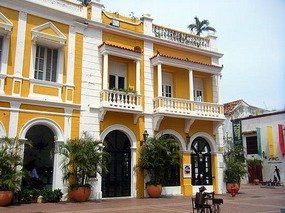
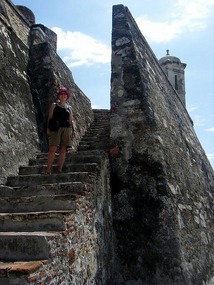
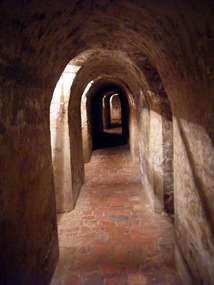
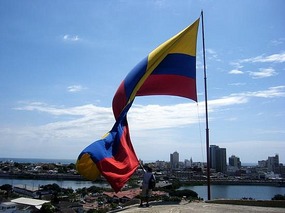
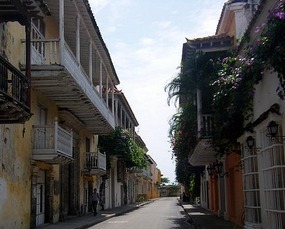
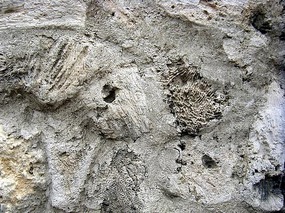
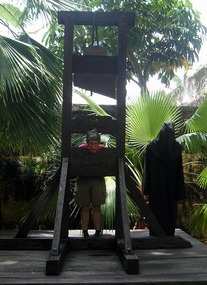

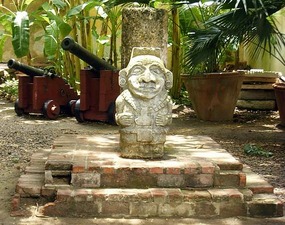
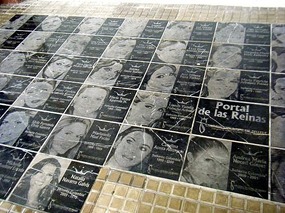



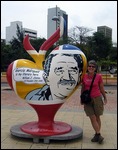
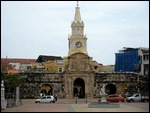
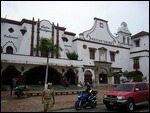
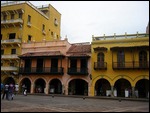
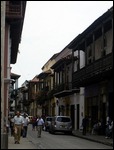
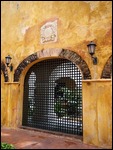
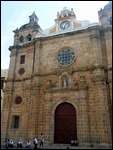
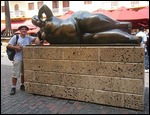

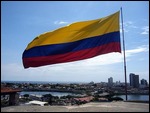
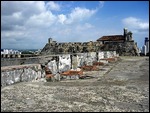
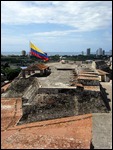
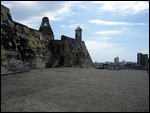


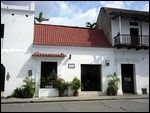
grindrodkaz
2010-05-07
hey looks like am interesting place, hope you are still having fun. Loved the Galapagos blogs and pics K